From the Peterloo Massacre of 1819 in Manchester to the present day, meet the revolutionaries, reformers, workers, voters, and citizens who came together to champion ideas worth fighting for.
Opened in 2010, PHM’s main galleries have since included different community co-curation ‘interventions’, reflecting on what stories are told and what stories are missing.
Family Friendly galleries, suitable for all ages.
Many of the historic items in the museum used colour to represent ideas. Each section of the galleries has a different background colour, chosen for its historic meaning; red for courage and revolution, green for reform, blue for loyalty, purple for dignity, pink for peace and prosperity, white for purity, and gold for ambition.
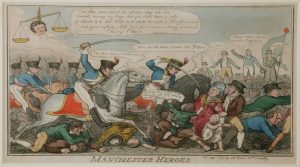
Uncover the story of the Peterloo Massacre of 1819, a major event in Manchester’s history and a defining moment for Britain’s democracy. When troops charged at the crowd of peaceful protesters seeking democratic rights, the gathering turned into a massacre with 18 people killed and around 700 injured. The event led to the reform of parliament in 1832, giving the vote to some.
Family favourite: In the past very few people could vote; spin the Wheel of Fortune to find out more..
What was the Peterloo Massacre?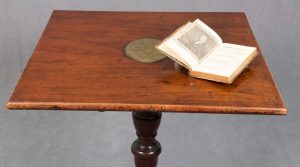
Discover the birth of democratic ideas, through the Levellers, the Chartists, and individuals such as John Wilkes, Thomas Paine, Mary Wollstonecraft, William Cobbett, and the Cato Street Conspirators.
On display is radical writer and political activist Thomas Paine’s desk, on which he wrote the second part of his most famous book, ‘Rights of Man’ in 1791.
Family favourite: Find the coffin used for smuggling newspapers critical of the government – open at your peril!
More treasures in PHM's collection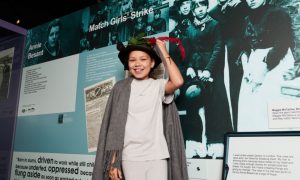
Follow the growth of the trade union movement, including secret societies, the Tolpuddle Martyrs of 1834, and the Match Girls’ Strike of 1888.
Family favourite: Experience the harsh working conditions at the Bryant & May match factory – how fast can you work?
What was the Match Girls' Strike?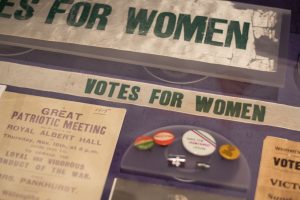
Learn about Britain’s main political parties and movements, including early socialism, the Conservative and Liberal Parties, the birth of the Labour Party, the Communist Party of Great Britain, the General Strike, the campaign for votes for women, the Spanish Civil War, and fascism.
Family favourite: Visit local councillor and suffragette Hannah Mitchell’s kitchen to play the Pank-a-Squith board game.
Incredible objects from 20 general elections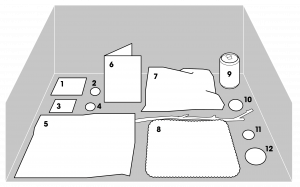
This case in Gallery One is changed regularly to shine a spotlight on objects from the museum’s collection that are not on permanent display.
Visit the latest display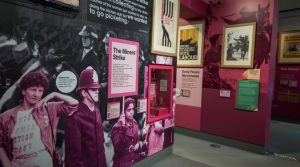
Explore material from the birth of the NHS, delve into the decades long fight for LGBTQI+ equality, and get up close to objects from strikes that changed the face of protest.
Family favourite: Find the badge maker and create your own protest badge!
Miners' Strikes and more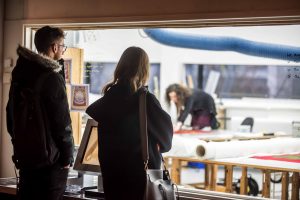
Don’t miss ‘the big three’; some of the museum’s most impressive and significant banners showcased in a purpose built double height space – a key feature of the 2025 Banner Exhibition.
Peek behind the scenes into The Conservation Studio, where our expert team of specialists care for and conserve the museum’s collection, as well as commissions for other museums, communities, and individuals.
Family favourite: Look down the microscope at the creepy crawlies we must keep out of the collection..
Been there, protested that, got the t-shirt
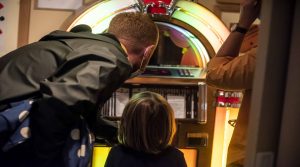
Discover how time off for workers was won, and how they spent their new found leisure time.
Explore working class leisure activities such as football, including items from the collection of the Professional Footballers’ Association (PFA), plus music and the Musicians’ Union, and find out more about the Co-op, the pioneering shop that put people before profit, formed in Greater Manchester by the Rochdale Pioneers.
Family favourites: Play shop in the Co-op and dance to your favourite songs on a vintage juke box!
Weird and wonderful food and drink items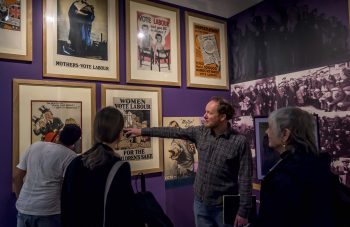
Join a bookable guided tour led by a member of the museum team, exploring key topics featured in the museum’s galleries.
We also offer regular drop in weekend mini tours of the galleries – ask at the welcome desk on the day of your visit for details.
Book your place